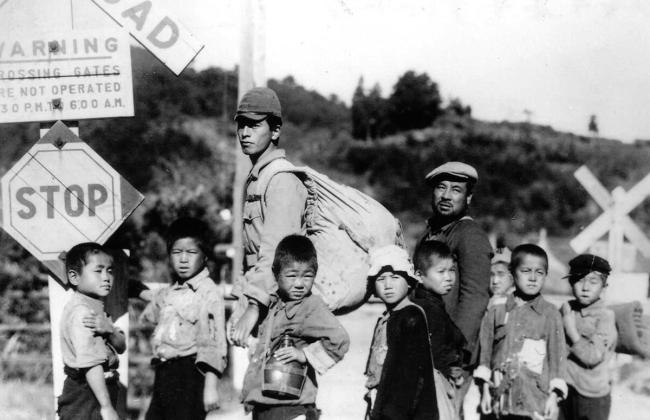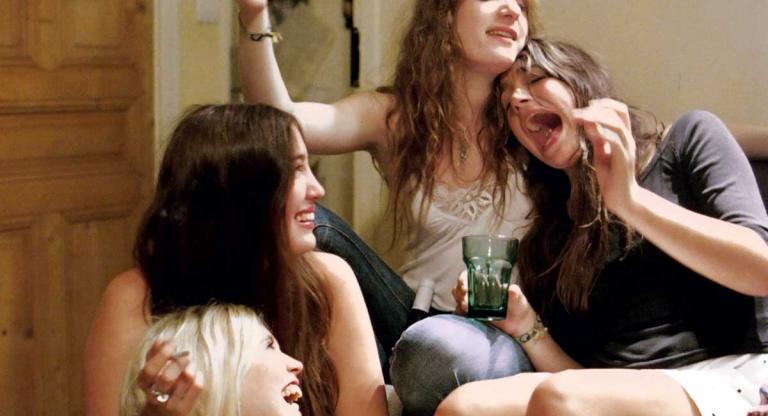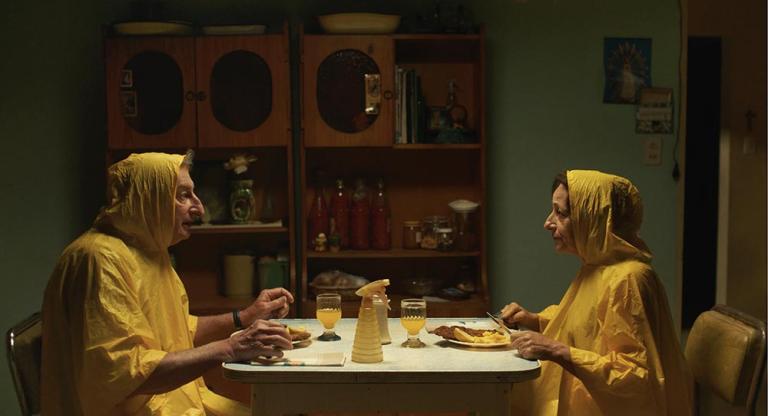Born in 1903, Hiroshi Shimizu, like his colleagues and friends Yasujiro Ozu and Kenji Mizoguchi, is a titanic figure in the development of the early Japanese film industry. Starting in the silent era and working through the transition to sound, the industry’s turn to wartime propaganda, and the post-war devastation and occupation, Shimizu’s work remains essential viewing for its historical value alone. Luckily, his films are also astounding aesthetic and dramatic experiences that rival, and surpass, the work of his better known peers. Unluckily, they are incredibly hard to track down. (Even for the more savvy, torrent-minded cinephiles, only four out of his 163 films are on DVD and there are only a scant few others lingering on the internet on fuzzy VHS rips. It’s this situation which makes the wandering Shimizu retrospective, which originated at Japan Society and the Museum of the Moving Image in New York, and will now take place at the Berkeley Art Museum and Pacific Film Archive, a vital experience. Consisting largely of prints imported from Japan, this retrospective is a heroic effort on its programmers’ behalf, as it provides a once-in-a-generation opportunity to discover a classic master.
As his best known work, Mr. Thank You (1936) stands out as the quintessential Shimizu film; its aesthetic achievements and emotional stings offer a perfect opportunity to dip your toes into his style. Titled after its main character (played by Ken Uehara), a bus driver who belts out a hearty “Thank you-ou!” every time a pedestrian moves aside to let him pass, Mr. Thank You captures a long bus ride through the mountains on a beautiful summer day. However, what at first appears to be an upbeat comic adventure replete with broad slapstick, jocular banter, and a few ridiculously oversized walrus mustaches, is slowly undermined by Shimizu’s persistent attention to showing the harsh reality which lies just out of sight. As characters leave the bus, or appear on the side of the road, passengers comment on their stark situations, offering stories of economic destitution, forced prostitution, and unemployment that contrast with the film’s cheery music and sun-dappled landscapes.
Throughout his career, Shimizu preferred to work outside the domains of the studio, instead opting for the open air where he could achieve a better sense of naturalism and spontaneity in his work. He often started working on a film with little in the way of a script, finding it in the world around him, and building scenes around the people and places he encountered along the way. Mr. Thank You epitomizes his abilities in this regard, sauntering forward on the barest of narrative through-lines while building a touching melodramatic vision solely through small interactions between passengers and incidents encountered in passing. These tonally inexplicable and narratively unmotivated encounters make for unexpected moments of profound pathos, such as one stop on a beautiful mountain pass where Mr. Thank You flirts with an itinerant Korean worker. She dreams of riding alongside him in his bus, but laments, “Before I can travel the road I have built, I have to go build another one in the mountain.” Moments later, the film returns to the road and the upbeat music swells as two passengers start comparing each other’s mustaches. But the note of gloom lingers on, casting an uneasy pallor over all the smiles and wisecracks.
Shimizu was a poet of the bittersweet and this blend of joy and melancholy runs across his filmography; many of his best films start off as comedies only to slowly reveal themselves as tragedies. Children in the Wind (1937), the first in a trilogy including the two-part Four Seasons of Children (1939), almost entirely devotes itself to scenes of children at play. Set across a long summer break, Shimizu fills the film with scenes of the brothers Zenta (Masao Hayama) and Sanpai (Bakudan Kozo) swimming in a river, climbing trees, and sumo-wrestling. All the while, he relegates the film’s melodramatic story involving their father’s fall from grace and subsequent incarceration on the grounds of alleged embezzlement to the background. Shimizu first presents this storyline as a rumor that Sanpai’s friends use to tease him, but later reveals it visually when a group of mysterious strangers show up to seize the brothers’ house as they play-act an olympic diving competition amongst their bedspreads. Here, Shimizu aligns the viewer with the childrens’ naïveté, gesturing at the grim circumstances which influence their lives without always allowing us to fully comprehend them.
Working in a highly nationalistic pre-war Japan, Shimizu’s attention to the bitterness and ignorance lying behind the nation’s cheery and optimistic social veneer seems, at least retrospectively, to have a potent and understated criticality to it. Children were a fertile ground for Shimizu, offering a strong vantage point into exploring the contradictions of class and social life through their naïvetés and growing pangs. As the war came to an end however, injustice and suffering became harder to ignore. Japan was devastated economically, spiritually, and physically.
This is in no place more apparent than in his first post-war effort, the independently-produced Children of the Beehive (1948). Starring a handful of real-life war orphans that Shimizu adopted and raised, Children of the Beehive combines post-war neorealism with pre-war classicism, pushing his sense of tragedy into starker and more uncompromising realms while still retaining a core belief in the the healing power of community and its ability to preserve social order. The film has the same road movie structure as Mr. Thank You, except that instead of a bus full of singing strangers it follows a group of war orphans traveling alongside a soldier (played by Shimamura Shusaku) across Japan in search of work and sustenance. Dressed all in rags and forced to beg, or steal, to nourish themselves, the children are a humbling sight throughout the film. Shimizu mines them for all their cuteness and tragedy. He catches them at play, spitting out the bitter persimmons they’ve filched, and standing by the seashore calling out “Mother!” in the hopes of reaching their long-drowned parents.
In the film’s most heartbreaking sequence, Yoshibo, the same child who yells out for his mother, becomes ill and bribes his friend, Yutaka, to carry him up a large mountain so that he can see the ocean again and look for his mother. As Yutaka carries him up the mountain on his back, Shimizu creates a captivating display of cinematic technique, creating a breathtaking montage of landscape shots, close-ups of Yutaka perspiring, and quick-cut inserts of the myriad dangers Yutaka almost succumbs to. This scene is a rousing testament to the power of perseverance and willpower when it is in service of spiritual triumph, which is then made both futile and more monumental by Yutaka’s sudden realization that Yoshibo passed during his mountain climb. Across Shimizu’s work, moments of ascendency are matched with moments of deep emotional defeat. In his pre-war years this sentiment carries a certain amount of prescience; after the war they are often tragic. Either way, they provide an immaculate sense of emotional contradiction, continually burrowing further into their characters and situations to pull off surprising notes of pathos that devastate you when you least expect it.
"Hiroshi Shimizu: Notes of an Itinerant Director" runs July 19 to August 18, all on film, at the Berkeley Art Museum and Pacific Film Archive.





